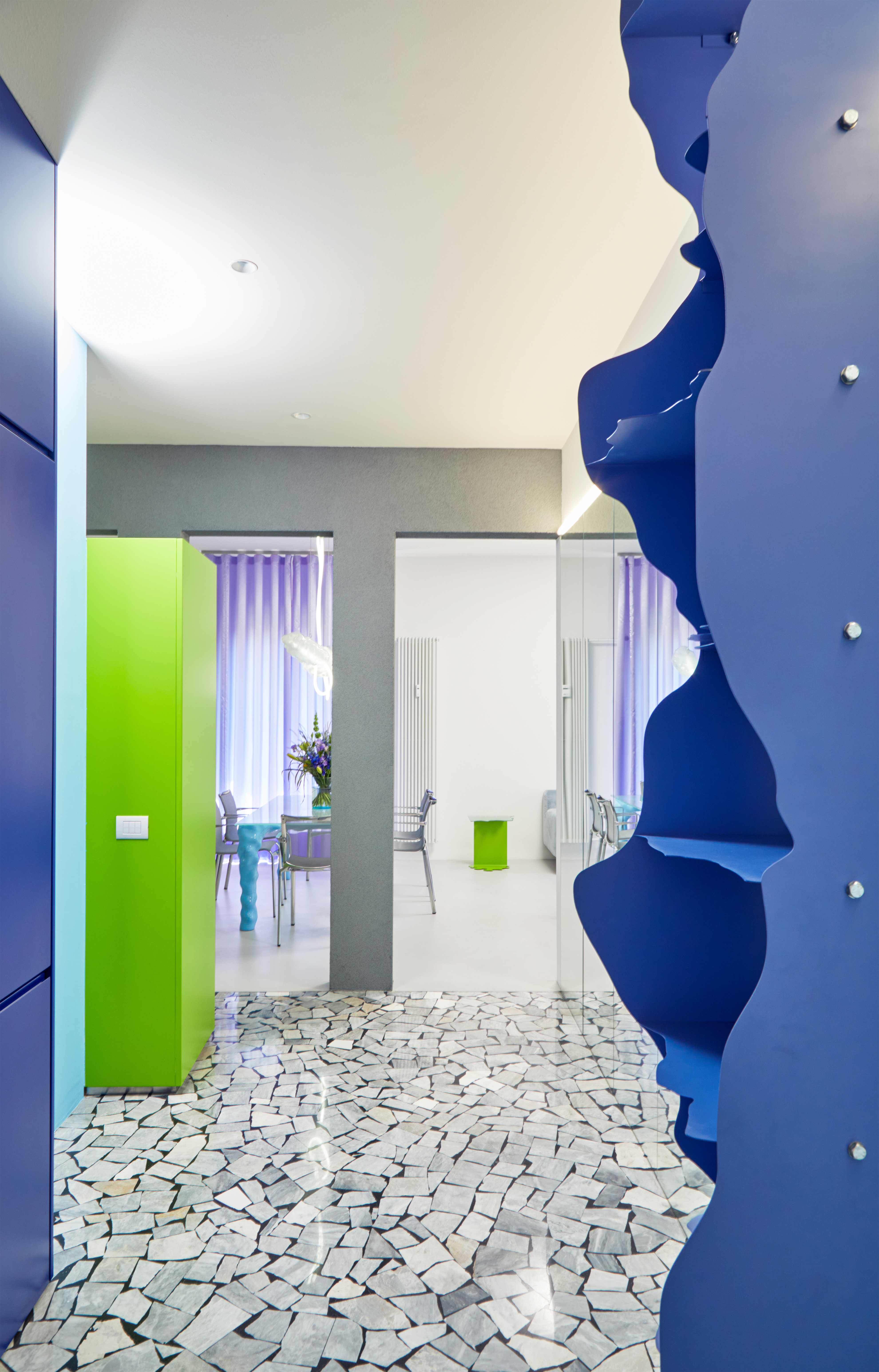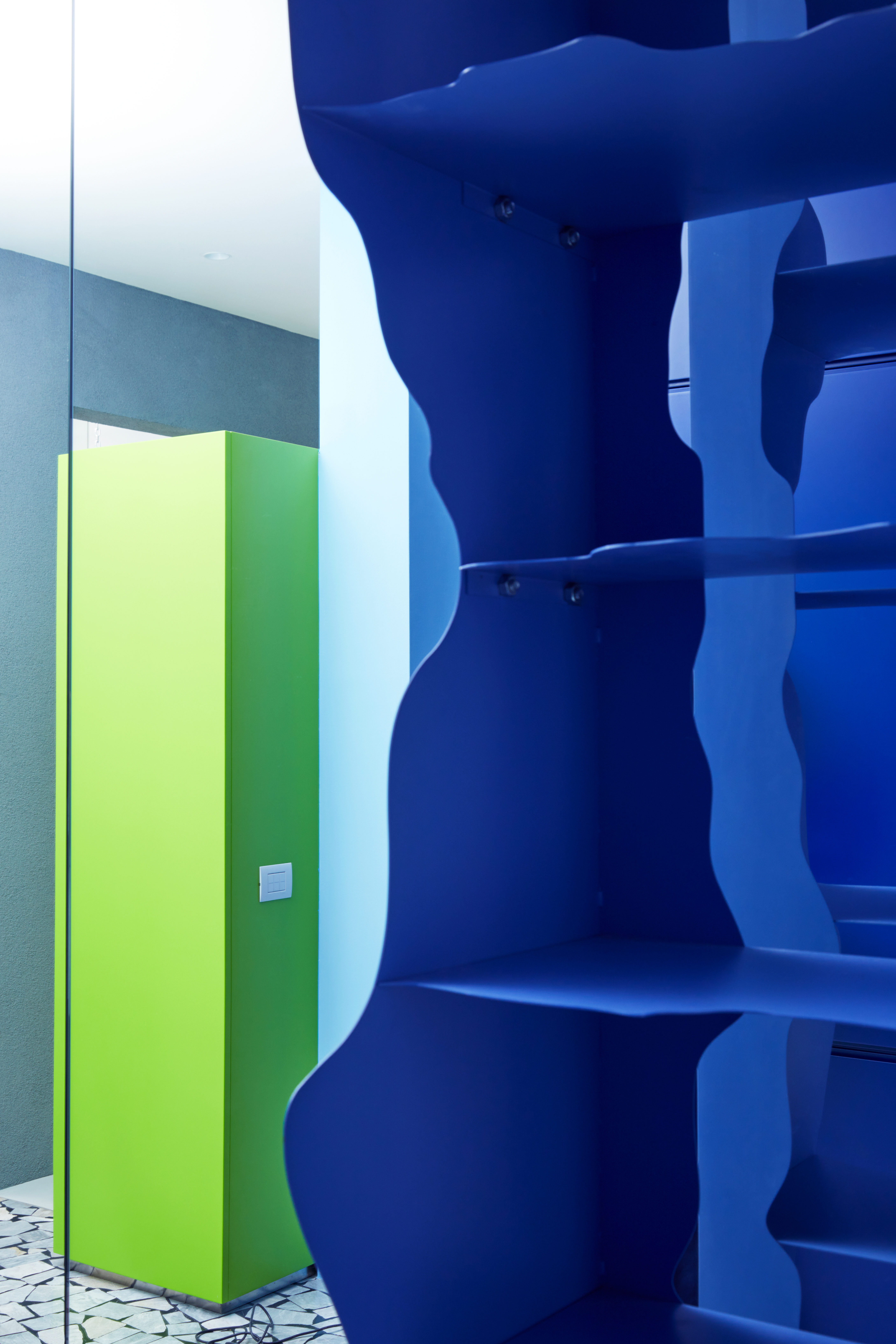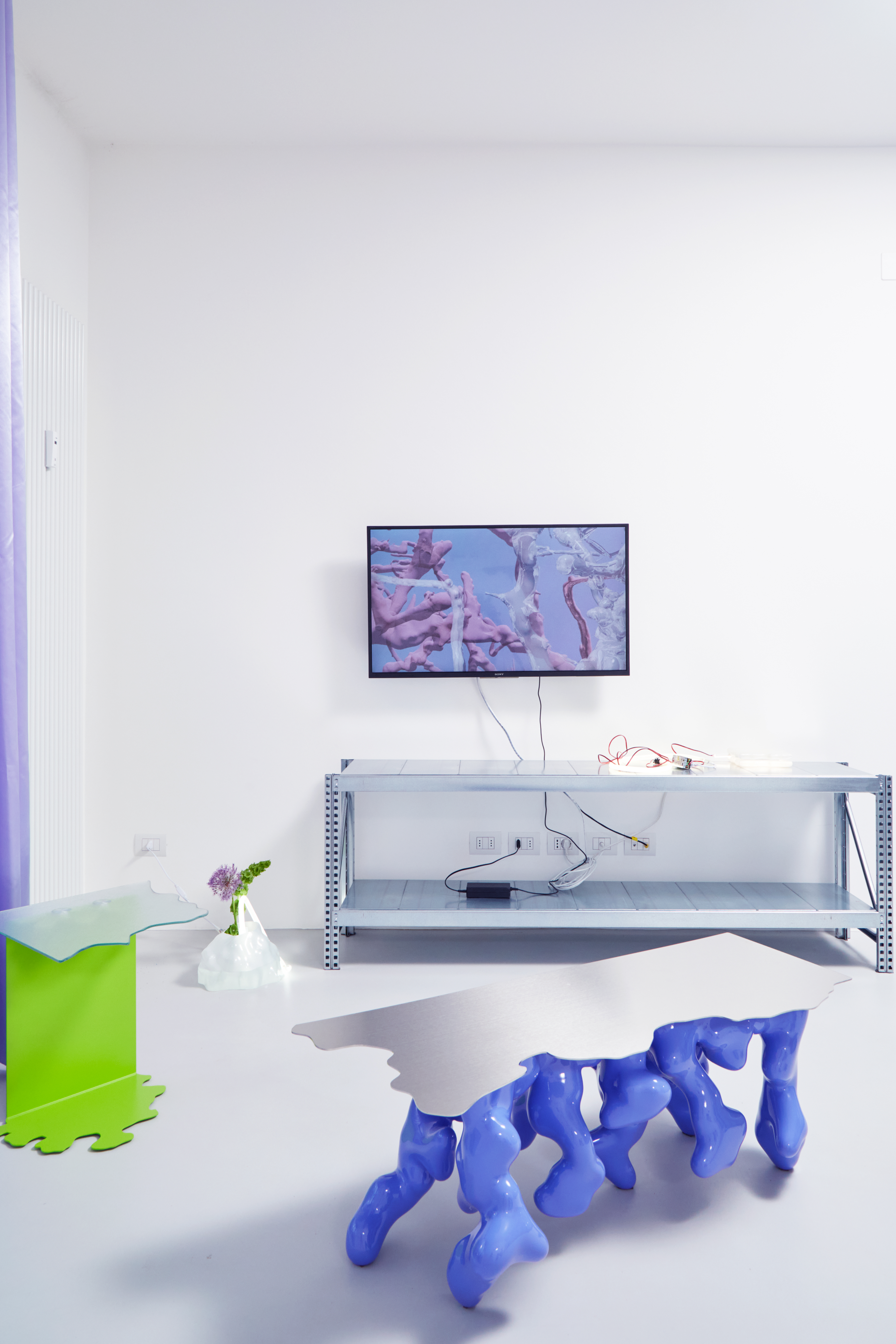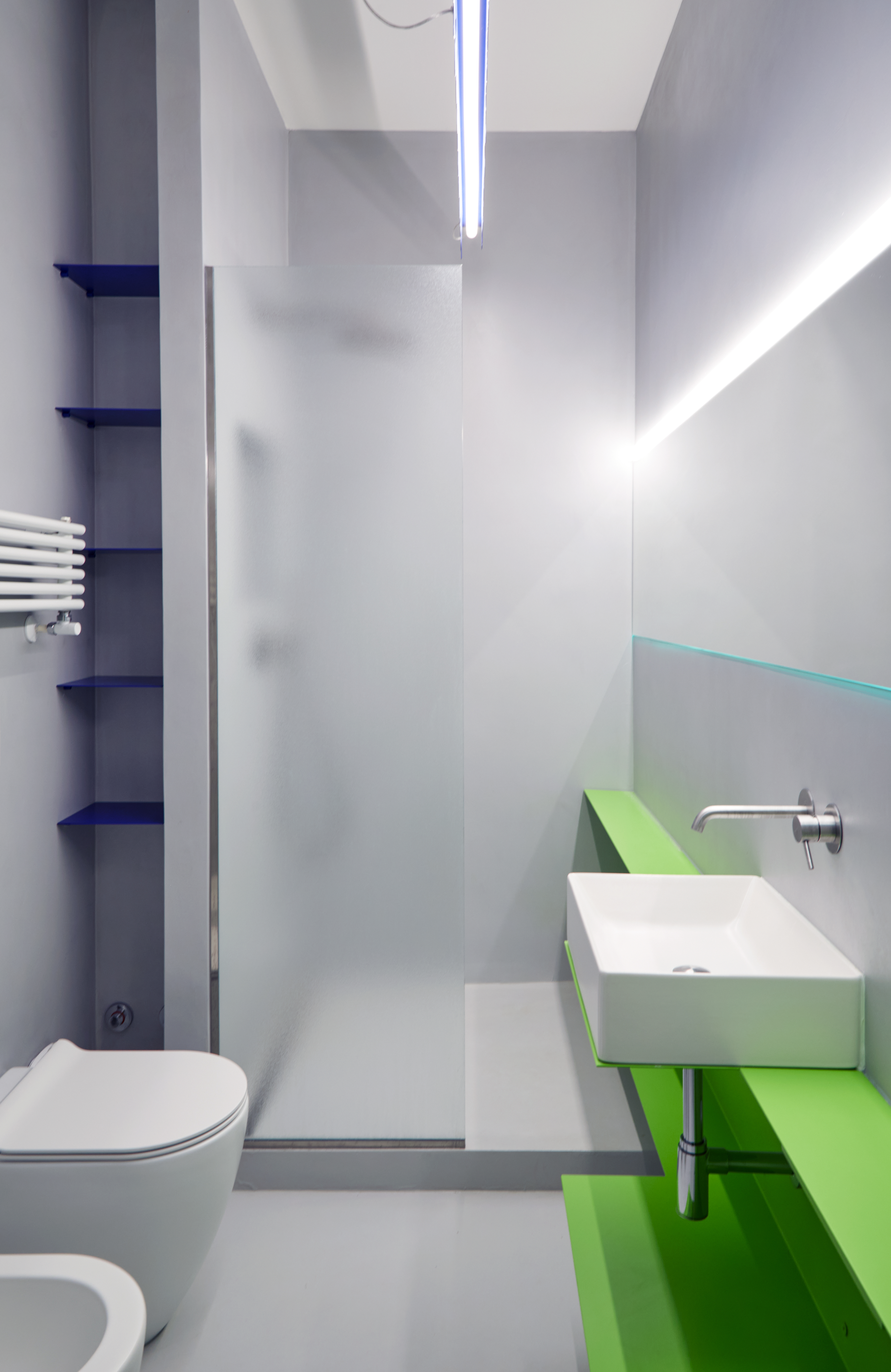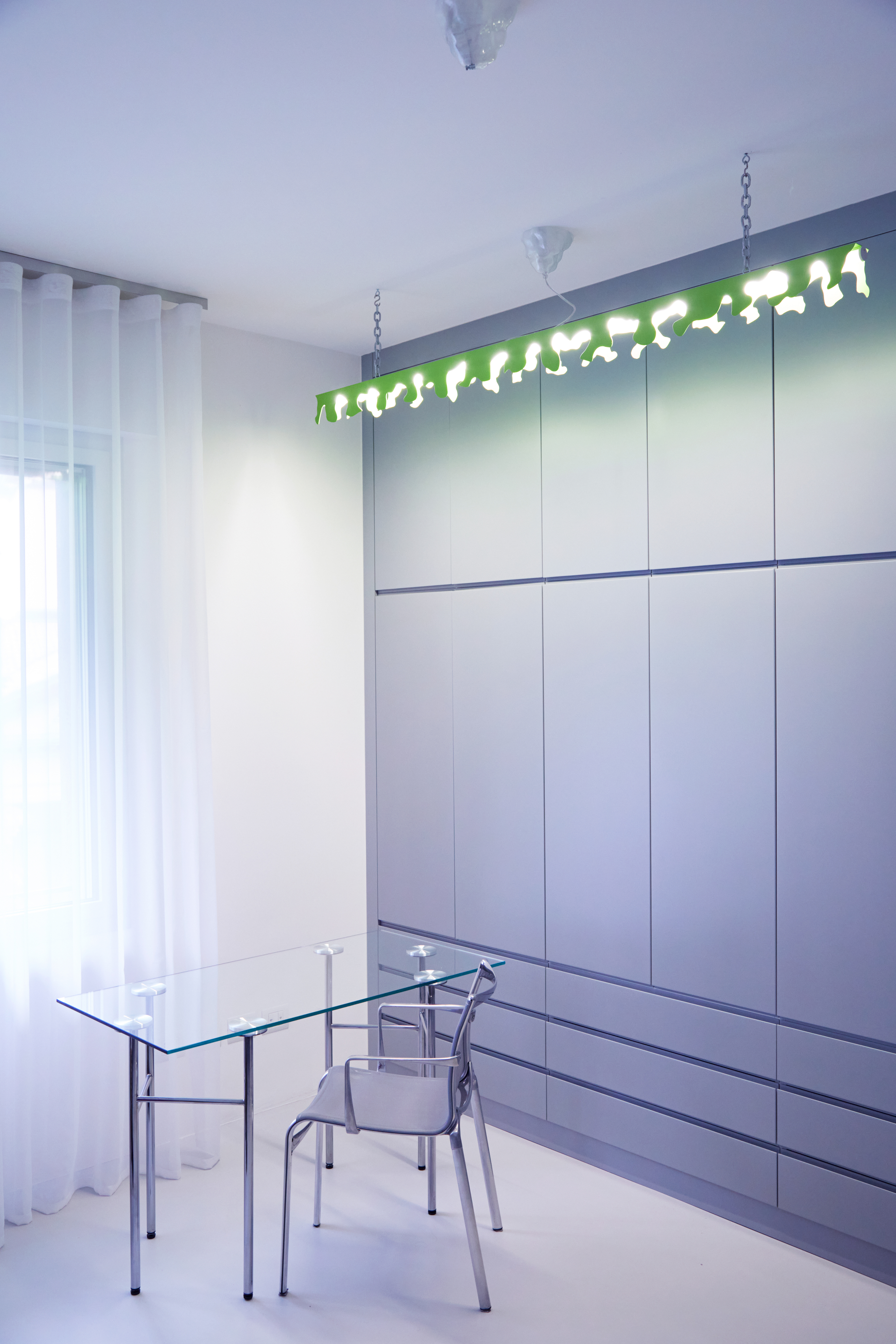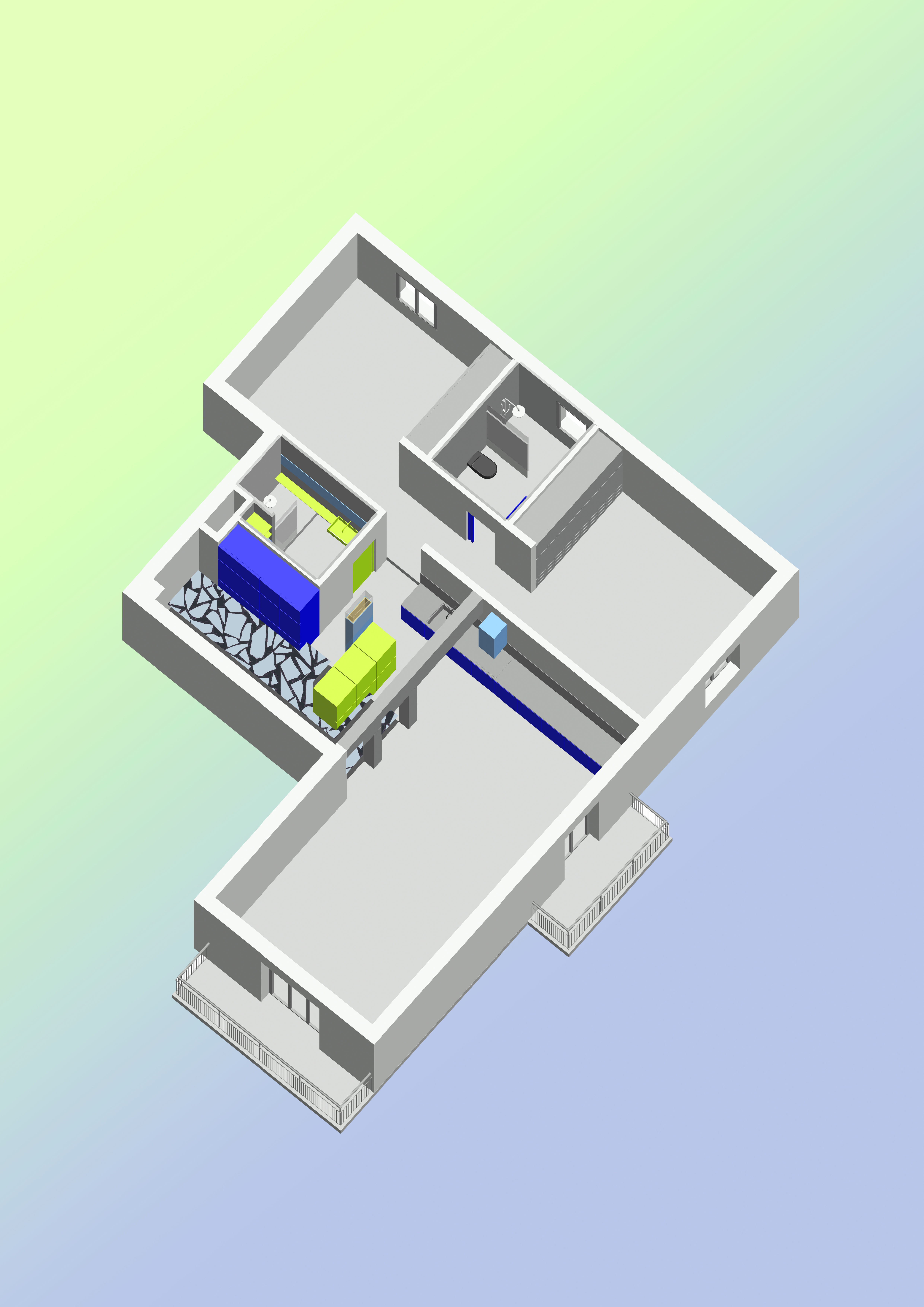![]()
BOLOGNA
Apartment renovation (2021)
Throughout history, the human being has always been in need
of generating virtuality as a liberation from the limitations of the present.
We are involved in a fragmented space that combines the physical and the
virtual, while the boundaries between these two dimensions become more porous,
fluid, transformative and mutating. The real converges with the virtual in an
assemblage of experiences, the physical and the virtual body no longer
contradict each other, they intertwine. A hyperreality, where a secondary
superstructure occupies almost the place of the real materiality.
![]()
Theorist José Esteban Muñoz
defends in Cruising Utopia a non-binary or queer vision of the world, the
rejection of the present and the insistence on the potentiality of other
possible worlds. A queer
aesthetic that is not an escapism from the social sphere, but rather the map
for future relationships.
Contemporary bodies are made
up of the interaction of biological and social elements that show the system of
identities as a machine in constant multiplication, reconstruction and
destruction. This new changing notion of identity coincides with what queer
theory already announced, the understanding of the human being as a construct
of borrows, citations, proximity... pure artifice, resistance to
standardization and reproduction of the multiplicity of life.
![]()
Bodies that practice
self-design through the transformation that takes place both in painted
surfaces and in the three-dimensionality of physical bodies and artifacts. Self-design
supposes rewriting the interior, the psychology, the political attitude and the
interests in the external media: in the physical appearance, in the
communication through fashion, in the objects that surround us, in the spaces
that we inhabit… through self-design, the contemporary subject is capable of
experiencing the multiplicity of being. The possibility of leaving one's own
identity, breaking with the unity or the origin, to rehearse the different
yearnings of the self.
The domestic architectural space
thus acts as an element in constant interaction with self-designed virtuality,
facilitating the inclusion of diversity, the multiplicity of being and
singularity to test new forms of life that allow the user to be the artifact of
their own identity. In
Spinoza's thought, expansion, transformation, development, and differentiation
correlate with the freedom of the individual. A model based on heterogeneity,
inclusivity and change.
![]()
![]()
The intense chromatic range of blues and greens, lights,
textures, steel, plastics and glass, pure and deformed shapes... make up a
network of associations that are revealed in the interactions with the
superficiality of the bodies. A superficiality understood as a means of
communication that incorporates gradients of difference that modulate
thickness, porosity, transparency or thermal absorption. In this way, the
atmospheres or environments become a projection of the user's own virtuality.
The tension between the materials and their shape
evidences the design technique and its production, using 3D printing techniques
with different industrial finishes, metal laser cutting, and textured glass. We
all know the promises of 3D printing, individualized goods, forms freed from
the limitations of modern industrial production, exchange of files for
production at destination...
![]()
Reyner Banham in his book Theory and Design in the Early
Machine Age, explains the passage of the “early machine age”, based on the mass
production of industrial objects in which their mechanical function prevailed;
to the “second era of the machine”, in which individualizable and singular
objects begin to be produced. A transition that represents the step towards an
expanded notion of object, not only capable of performing a certain function,
but also capable of modifying the environment from its presence, modifying and
freeing the individual, as an extension of the human body itself.
But what interests me most about 3D printing is as a
mediating artifact between virtuality and reality, an extension of the body itself
that short-circuits the distinction between nature and culture, as a trans
nature in constant denaturation and artificialization. We find ourselves
involved in a social compound in which the limits between living and non-living
beings are blurred, a nature-culture continuum.
![]()
![]()
![]()
![]()
![]()
![]()
![]()
![]()


